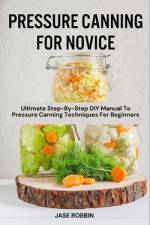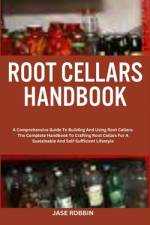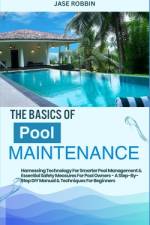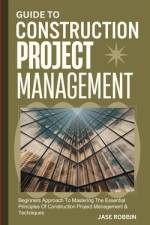- Beginners Approach To Mastering The Essential Principles Of Construction Project Management & Techniques
av Jase Robbin
175,-
Construction project management concentrates on the planning, coordination, and execution of construction projects as a specialized form of project management.The objective is to ensure that the project is finished in accordance with safety regulations and meets the necessary quality standards while adhering to the set budget and schedule constraints. Management of construction projects entails a variety of duties and obligations, such as: Planning a project entails establishing its objectives, scope, budget, and schedule. Furthermore, it encompasses the delineation of potential hazards and resources, as well as the formulation of an all-encompassing project strategy.Scheduling: It is critical to create and manage project schedules in order to ensure that construction activities are carried out in the proper sequence and that deadlines are met. This requires the coordination of the numerous activities and tasks necessary for the undertaking.Budgeting and Cost Estimation: In order to effectively administer projects, cost estimates for materials, labor, equipment, and other resources must be precise. Then, in order to maintain expense control throughout the project lifecycle, they develop and oversee budgets.Resource Management: This entails the coordination and allocation of materials, equipment, personnel, and resources to guarantee their availability at the required time.Risk Management: A critical component of construction project management is the identification of potential hazards and the formulation of strategies to mitigate or address them. This requires evaluating and preparing for potential project-impacting uncertainties.Quality Control: It is critical to ensure that the construction work adheres to the designated quality standards. This entails the execution of quality control protocols and the undertaking of inspections throughout the project's different phases.Communication: In construction project management, effective communication is vital. To ensure that all parties are on the same page, project managers must maintain communication with stakeholders, team members, subcontractors, and other project participants.Contract Management: A multitude of construction endeavors necessitate agreements with diverse entities, such as consultants, suppliers, contractors, and subcontractors. Construction project management requires effective oversight of these contracts, encompassing activities such as compliance, negotiation, and dispute resolution.Health and Safety Compliance: It is of the utmost importance to guarantee that construction sites conform to health and safety regulations in order to avert catastrophes and foster a secure occupational setting.Project Closeout: Following the conclusion of the construction project, the project manager is responsible for supervising the final inspections, ensuring compliance with all contractual obligations, and facilitating the project's transfer to the client.Affording successful construction project management necessitates the integration of technical expertise, organizational acumen, proficient communication capabilities, and solid leadership













